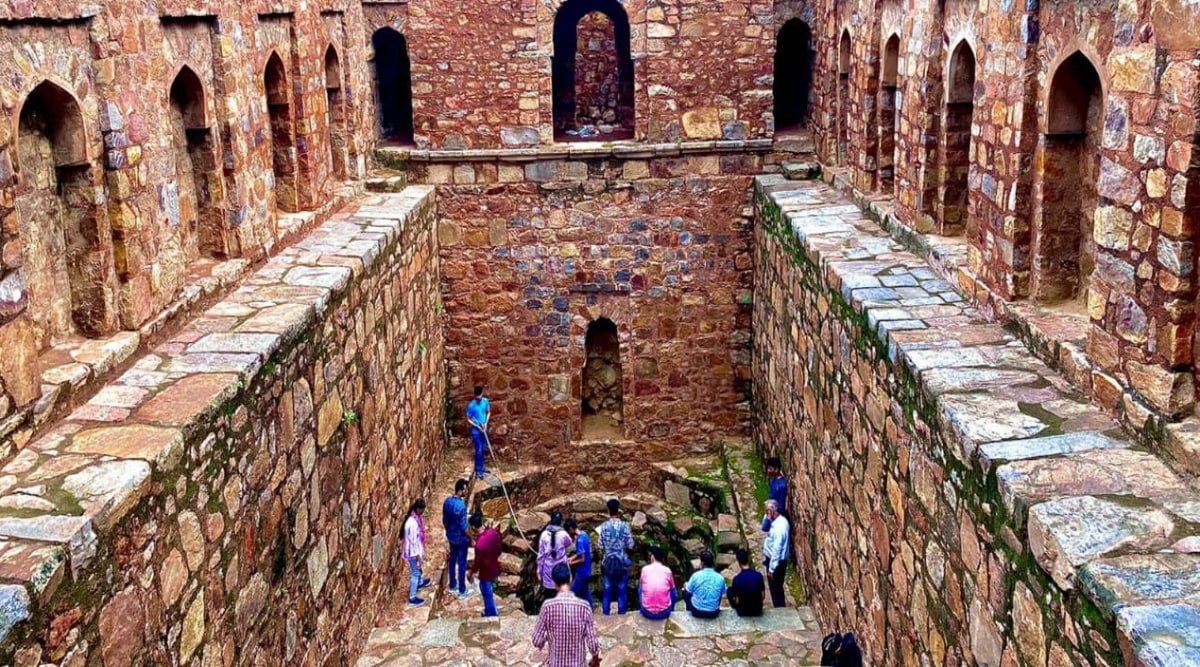 Three teams from the university’s Department of Civil Engineering were created with 15 students each and each team was headed by a professor. (Twitter/@jmiu_official)
Three teams from the university’s Department of Civil Engineering were created with 15 students each and each team was headed by a professor. (Twitter/@jmiu_official)A group of students and professors from Jamia Millia Islamia university have carried out a study on rejuvenating and preserving traditional local water bodies in Delhi “to ensure water security and community development”.
Three teams from the university’s Department of Civil Engineering were created with 15 students each and each team was headed by a professor. The teams conducted their respective studies at Satpula water channel near Khirki Masjid, Gandhak ki Baoli in Mehrauli village and the Baoli or water tank at Wazirpur Ka Gumbad.
Between July 1 and August 5, the teams collected information on these water bodies through the internet, by reading literature, visiting the Archaeological Survey of India (ASI) office and urban local bodies such as the horticulture departments of the Municipal Corporation of Delhi (MCD) and Delhi Development Authority (DDA), and through interactions with locals.
According to university officials, the findings were that encroachments around the water bodies are common and significant, and that these water bodies are either devoid of water or are used to dump waste.
“Limited information was available about these water bodies. Due to modern practices of the water supply system, the relevance of these traditional water bodies in the societal context was somehow ignored. As a result, these historical heritages (sites) did not get due attention and are in pathetic condition…,” a university official said.
3 teams of @jmiu_official Civil Engg. students conducted study of Delhi water bodies to rejuvenate & preserve them under Mission Amrit Sarovar-Jal Dharohar Sanrakshan.@rashtrapatibhvn @PMOIndia @EduMinOfIndia @AICTE_INDIA @MoHUA_India @dpradhanbjp @ugc_india #AmritMahotsav pic.twitter.com/NIStMnAfmZ
— Jamia Millia Islamia (Central University) (@jmiu_official) August 23, 2022
“These historical heritages (sites) still have very sound potential to be preserved and rejuvenated. Rejuvenation plans and action for rejuvenating these water bodies have also been proposed. In addition, students were very appreciative of their societal concern and responsibility,” the official added.
Subscriber Only Stories
This task was assigned to Jamia’s Department of Civil Engineering by the All India Council for Technical Education (AICTE) under ‘Mission Amrit Sarovar – Jal Dharohar Sanrakshan’ started by the Union Ministry of Housing and Urban Affairs. The ministry has identified over 300 culturally and historically significant water bodies across the country as part of the programme.